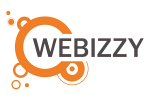Have you ever had a website created before? It costs a small fortune, you spend many painstaking hours putting together content, images- trying to second guess what would be effective, testing it. Then finally- it’s live! Then... well, that’s it? People start using new platforms, technology keeps advancing and your website quickly becomes outdated. It’s then time to think about the dreaded re-design, going through the whole process again! Which is why Growth Driven Design is fast becoming the new way to develop a website.
Your website is your best sales person, it’s where your customers will go first so it needs to be effective in delivering your key messages on any platform. Technology doesn’t stop developing, customer requirements never stop changing- so why would you take the traditional launch it and leave it website approach?
This is where Growth Driven Design (GDD) is coming into its own by minimising the risks of traditional web design focusing on real impact, and continuous learning and improvement. Instead of launching everything on one go, GDD works in ‘sprints’ for shorter timeframes and less risk.
What is Growth Driven Design?
GDD is a more responsive website creation process, building upon a website continuously with data driven intelligence. It marries up all the elements of traditional website design, combining it with effective marketing concepts and creating less friction, more intelligence with a much more user centric approach. What does the customer want to see? Where are they looking for it? How does this make them feel? This customer centric approach builds upon what is working well and is strategically effective in growing your business month on month.
Put simply- it is an intelligent approach to building a website. Without the initial cost and with the user at the core.
There are 3 stages to GDD: The Strategy, The Launch Pad and Continuous Improvement.
Phase 1: The Strategy
Find the Value and Impact
You wouldn’t plan a business without an effective strategy and your website should be no different. In fact, it should be an extension of your business, working with you to reach your desired goals and objectives. To reach these, it’s important to have an understanding of your customers behaviour. What is their profile or persona? The what, where, why, when and how is a good basis to build these. Understanding their defining characteristics will form the basis of your website.
Now you’ve got your personas, it’s time to get SMART.
With an overarching end goal, begin a ‘wish-list’ of products, pages, features. Identify the ones that will give the most value to the customer and prioritise them based on the impact they have for your business.
Phase 2: The Launch Pad
20% Features 80% Impact
With the highest value elements to create the most impact, the Launch Pad begins the continuous improvement process. The ‘nice to haves’ will come a little later, this is time for the ‘must haves’.
There are 6 key areas for an effective launch plan:
-
Planning Sprint: Consider the user needs for each key page, plan the outline and flow for each one adding in data collection ideas.
-
Prototype Sprint: Create the tasks and deliverables required for your site based on user feedback. Build the page into a design-ready prototype and begin to direct traffic to the new pages.
-
Design Sprint: With valuable feedback coming through the prototype pages, you’ll be able to validate or throw out the initial assumptions and begin the first stage of design.
-
Finish Sprint: The design is tested, ready and effective! Get the final touches in place: coding, inserting links, metadata, browser testing, speed testing with heat map and screen recording in place.
-
Page Sprints: Each ‘sprint’ will focus on 3-5 pages at a time, the priority given to the ones with the most impact. The highlights from these pages are then transferred to the remaining pages.
-
Quality over Quantity: Speed should never compromise user value! How many times have you clicked quickly off a site that took too long to load?
Phase 3: Continuous Development
Never-ending improvement
Unlike traditional website design, the GDD approach captures and analyses customers changing tastes and behaviours. Allowing you to react, optimise and improve the website month on month.
As long as you continue to put the effort in to capture data and review the customer journey and experience, you will continue to reap the benefits of an intelligent, customer focused website. You’ll never need a full re-design again!
If you want more information on GDD get in touch or find out more about Growth Driven Design by clicking here.
